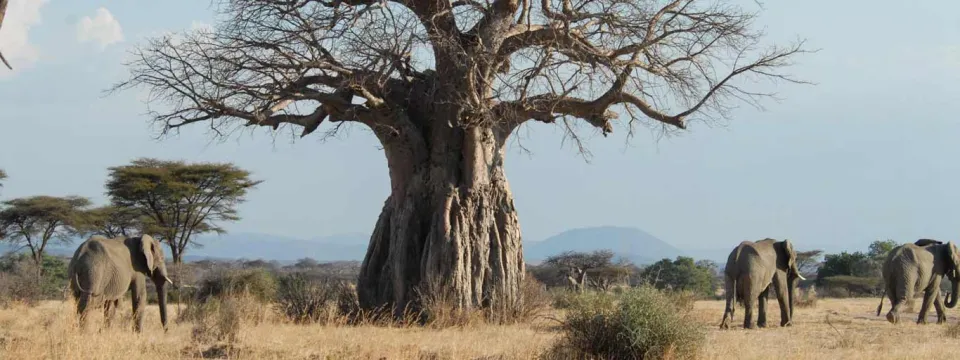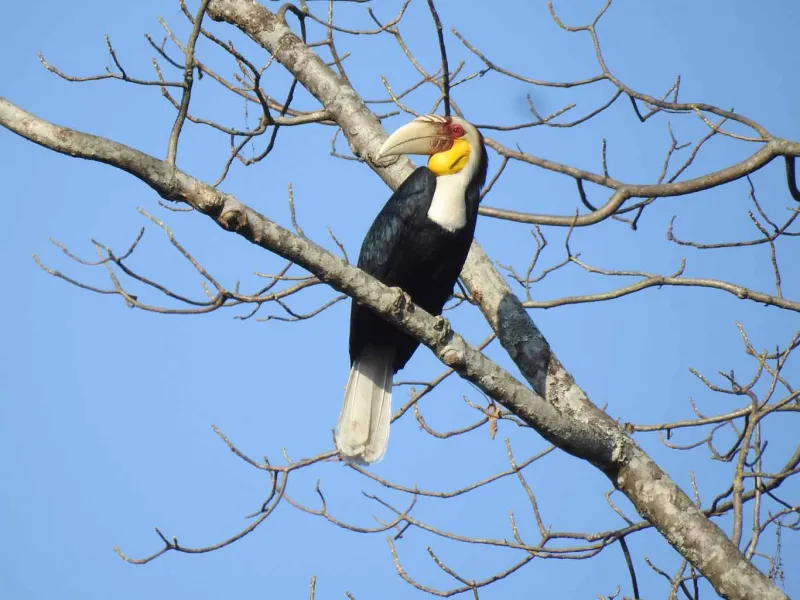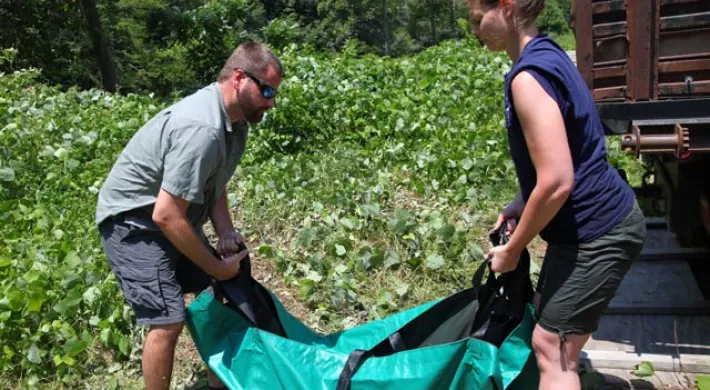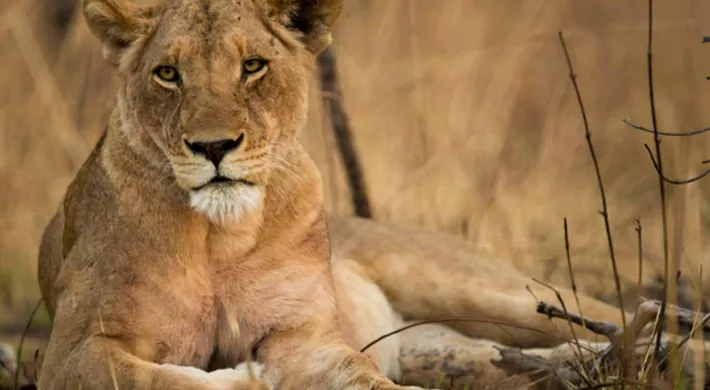World Wildlife Day 2022: Reflections on Conservation After Two Years of COVID-19
Written by Drew T. Cronin, Associate Curator of International Conservation, North Carolina Zoo
Every year on March 3, the world celebrates "World Wildlife Day." This year's theme - "Recovering key species" - focuses on the conservation of the world's most critically endangered species. This aligns well with our work at the Zoo, where conservation is at the heart of everything we do. We work to conserve critically endangered species around the world, such as snakes and frogs in the Caribbean, black rhinos in Namibia, Cross River gorillas in Nigeria, forest elephants in Ivory Coast, vultures in Tanzania, hornbills in the Philippines, or red wolves right here in North Carolina.
However, the COVID-19 pandemic has fundamentally changed our collective behavior, including how and where we travel and how we work. This presents both challenges and opportunities for biodiversity conservation, but we likely won't know the full impact for some time.
As we approach the end of the second year of the COVID-19 pandemic, we thought it would be interesting to hear the Zoo's conservation staff's thoughts on how the pandemic has changed their perspectives on their work and what they are most looking forward to in the year to come.

Dr. Rich Bergl, Director of Conservation, Education & Science
The covid pandemic has helped me see how successful conservation relies on collaboration and how everyone can play a role. A lot of the conservation work the Zoo does involves our staff traveling to locations across the state or around the world to contribute their expertise, time, and insights to a diverse range of projects. Covid meant that much of this work was not possible. Similarly, many of our partners in Africa rely at least in part on funding that comes from tourism. In the same way that we could not travel to work on conservation projects, tourism all but ceased. Much of what we had planned was not possible, and the day-to-day operations of conservation projects were threatened. However, we have continued operations through a combination of relying on our field-based staff (in Uganda and Tanzania), strong partnerships with other organizations on the ground, and being able to provide support remotely (through online training, technical support, and financial contributions). While this hasn't been ideal, it has meant that our long-term field conservation projects have continued, and our support for our partners has been maintained, albeit in a slightly different form. Now that the pandemic seems to be receding again, we are all cautiously optimistic that we can resume something approximating normal activities. However, it is hard to know what the future holds! Throughout the pandemic, the support of our guests and donors has been essential for us to continue pursuing our conservation mission. Thank you all for continuing to help us conserve wildlife.

Dr. Corinne Kendall, Curator of Conservation & Research
Covid has vastly changed the landscape of conservation in many of the places we work in Africa. Schools in Uganda were closed for nearly two years (from March 2020 to January 2022). With children in rural areas lacking access to remote learning opportunities, we shifted the focus of our UNITE program from teacher training to student support through workbooks. We created our own environmentally-focused radio programs as a way to enhance community outreach when our staff couldn't meet with community groups. In Tanzania, the lack of tourism has reduced revenue for protected areas and led to less protection for wildlife. Even though our tagged vultures have continued to provide novel insights into the landscape and helped us fight the threat of poisoning that can devastate vultures and lions. 2022 brings new opportunities and challenges as we continue to adjust to the many effects of the pandemic.

Roger Sweeney, Director of Animal Management & Welfare
The pandemic has made conservation work particularly challenging in Asia, with many countries maintaining strict quarantine requirements for visits, making travel difficult or impossible. We have had to find new pathways to communicate remotely and meet using technology.
While we have found many new ways to facilitate and move field conservation forward through virtual meetings, training, and technology to better record field data remotely, the past two years remind us of the importance of direct contact when facilitating science-based, stakeholder inclusive conservation planning. The interpersonal time and engagement from the shared team environment help build stronger trust and consensus among diverse participants and bring us to a stronger mission-focused shared outcome. The last two years have reminded us of the importance of staying in balance with the natural world for the health and wellbeing of all life forms. Still, it has also reminded us of the significance of engaging through shared experiences together as people and communities in a way that brings us closer together to build empathy, trust, and shared values.

Wreathed Hornbill
Dr. Jb Minter, Director of Animal Health
The year 2022 is starting great as I was recently approved to head back into the field for the first time since the pandemic's start. While we have been physically disconnected and lost some of the forward momentum gained in the first few years of the project, I personally feel that a stronger connection has been formed between the North Carolina Zoo and our partners in Cote d'Ivoire, now including the Office of Parks and Reserves.

Dustin Smith, Curator – Reptiles, Amphibians, Fish, & Invertebrates
We've all been stressed since the onset of covid in 2020, along with everything it has brought. These past two years impacted much of our efforts directly and caused us to miss many opportunities to work in the field with the species we are working to save. However, with travel opportunities slowly returning, we are all looking forward to working with the partners we've missed, as well as the field sites and species that need our help. We were fortunate to release over 450 Gopher Frogs at a new location in North Carolina in 2021. With the warmer rains approaching right now, we are looking forward to repeating this effort in 2022 and hope to see gopher frogs breeding any day now.


Dr. Drew Cronin, Associate Curator of International Conservation
Implementing conservation technology in the field is challenging under ideal conditions, so adapting to remotely supporting practitioners from my dining room has been interesting, to say the least. It has required a lot of patience and adherence to a motto of "improvise, adapt, overcome."
Unfortunately, it has led to delayed work and progress in the field. So much that there's now quite a backlog of development and training work to be done. That said, it hasn't been all bad. It has pushed me to be creative about delivering training materials, and - to some degree – I think it's deepened several partnerships. We've had to work together to support continued conservation efforts, despite all the challenges we're all facing. I'm very hopeful for the future, though, and I'm looking forward to getting back out into the field with our partners. Since there have been so many delays, there's now a lot of enthusiasm to really get things moving forward quickly. Hopefully, we'll be able to get back out into the field this spring and make big strides at our sites across Africa.
Dr. Betsy Roznik, Associate Curator of Regional Conservation
Being cooped up in quarantine has given many of us unexpected opportunities to reconnect with nature. For example, there has been a surge in bird watching as people began to look outside and appreciate birds in their backyards. Similarly, many avoided crowds by turning to local hiking trails for exercise and escape, leading to a boom in outdoor recreation. I'm hopeful that this engagement with local wildlife and natural areas will last beyond the pandemic and foster an interest in their conservation. The North Carolina Zoo protects over 2,000 acres of natural land. It maintains 7 miles of hiking trails, such as the Purgatory Mountain trail system at the Zoo, which offers hiking and wildlife viewing opportunities. Over the next few years, we plan to increase opportunities to explore and learn about these areas by adding 12 miles to our trail systems and offering more public programs on them.

Purgatory Trail




